27 June 2013
Disclosures by Edward Snowden of the PRISM project by the National Security Agency of the United States government have revived discussions about the need for democratisation of the current architecture of global internet governance. Notwithstanding the sophistry and grandstanding about preserving the multi-stakeholder model,freedom of expression and avoiding control of content,the current system is anything but any of these. Behind this veneer,the economic,commercial and political interests of a powerful group are sought to be entrenched.
The US not only possesses the capacity to keep our citizens under surveillance,but in fact tracks telephone calls,emails,chats and other communications based on the internet every month,in the name of counter-terrorism. Being ranked fifth,bracketed with Jordan and Pakistan and ahead of Saudi Arabia,China and Russia,should be a matter of concern for India.
Apologists among Indian IT majors and industry associations can be expected to rise in defence of the current model of internet governance; after all,many of them depend on global internet majors for their business,and have always spoken and acted on behalf of the latter. Whenever discussions are held on the subject,the former find ways of occupying the space and manipulating opinions that echo the interests of the latter.
India called for democratisation of global internet governance and proposed in October 2011 the setting up of a Committee for Internet-Related Policies (CIRP),accountable to the United Nations General Assembly,to deal with international public policies relating to the internet. Instead of discussing the pros and cons of different elements of the proposal,there was an orchestrated cacophony in the media designed to drown any reasoned debate. Calls were made to force India to withdraw the proposal. Indias proposal was characterised as catastrophic,threatening a UN takeover of the internet,and doomed to bring down Indian IT firms.
Indias policy on this subject of considerable strategic significance has been consistent for over a decade. The initial calls for democratisation of global internet governance were made by then ministers Arun Shourie in December 2003 in Geneva and Dayanidhi Maran in Tunis in November 2005,at the World Summit on Information Society (WSIS). India pursued the implementation of the report of the Working Group on Internet Governance (WGIG) chaired by Nitin Desai on the subject during the 2003 -05 period and the Tunis Agenda,which mandated that the International management of the internet should be multilateral,transparent and democratic. The report got implemented only in parts,through the setting up of the Internet Governance Forum whose ineffectiveness has been increasingly recognised in recent months even by Western commentators and academics. The more important recommendations on dealing with public policy issues were buried deep,without any meaningful discussion of the options presented in the report.
The WGIG had identified significant governance gaps with regard to the internet: these included unilateral control of the root zone files and systems and lack of accountability of root zone operators; concerns over allocation policies for IP addresses and domain names; confusion about application of intellectual property rights in cyberspace; substantially higher connectivity costs in developing countries located far from internet backbones; lack of multilateral mechanisms to ensure network stability and security; lack of effective mechanisms to prevent and prosecute internet crimes and spam; barriers to multi-stakeholder participation; restrictions on freedom of expression; inconsistent application of privacy and data-protection rights; absence of global standards for consumer rights; insufficient progress towards multilingualism; and insufficient capacity-building in developing countries. The Indian proposal had only suggested that these very same issues,as well as policy issues that have evolved since WSIS,be considered by the CIRP; it had not proposed that the UN take over the internet,or that the current technical arrangements be overturned,as argued by the detractors.
We need to recognise the implications of the current model. On the one hand,India is asked to ratify the Budapest Convention on Cybercrime,in the negotiation of which India played no part,in order for us to be eligible to be qualified as a data-secure country. On the other,India is sought to be excluded from any forum or deliberations where the global rules for governance of the internet or management of critical internet resources and logical infrastructure are evolved. Another aspect that is seldom appreciated here is the discomfort that European countries have with the current US-dominated model of global governance of the internet,as demonstrated by statements emanating from their officials,the number of legal disputes European bodies have launched against US internet majors,and attempts by countries like France to modify the existing system.
Well before the Snowden disclosures,the security,socio-economic and legal implications of the current model of internet governance had become quite apparent. Just to take one example,the Julian Assange phenomenon and the WikiLeaks disclosures had amply demonstrated some of them. Concerns about shell companies and tax avoidance by global internet majors provide another instance. The use of Stuxnet was a third one.
The US is clearly determined to continue its relentless pursuit of the current model of global internet governance,for preserving its economic and strategic interests. It is unlikely that there will be any change in its policy even after the Snowden disclosures.
Some representatives of Indian industry associations have been warning that Indian IT companies are heavily dependent on global internet majors and that they will suffer by Indias championing of the cause of democratisation of internet governance. This lie needs to be nailed. First,there has been no evidence of any such impact. Second,independent of Indias proposal,Indian IT companies have been demonstrating that they have more or less reached the maximum of the current models of their growth. Third,we need to work for the next generation of Indian IT companies,which can move up the value chain by creating their own branded services and products and leading global innovation in IT. In other words,we need to produce the next generation of Murthys and Premjis. This requires modifying the eco-system,architecture and infrastructure,both nationally and internationally,where such ventures can grow. This makes it imperative for India to become a lead player and shape the global ICT industry architecture that helps Indian ICT companies of the future.
None of this is going to be easy,however. We need a dedicated group of people within the establishment,industry,technical and scientific community,academia,civil society and media who can reflect upon and define Indias long-term interests in advancing the cause of democratising global internet governance and free ourselves from the current model where the space for discussion is arrogated by apologists for the current model of unilateral control.
The UN has launched a process for observing the 10th anniversary of WSIS in 2015. This provides an opportunity for India to work with other leading democratic countries like Brazil and South Africa within the IBSA platform and with other like-minded countries in the UN for democratising global internet governance to make it truly multilateral,transparent and democratic,as envisioned in the Tunis Agenda.
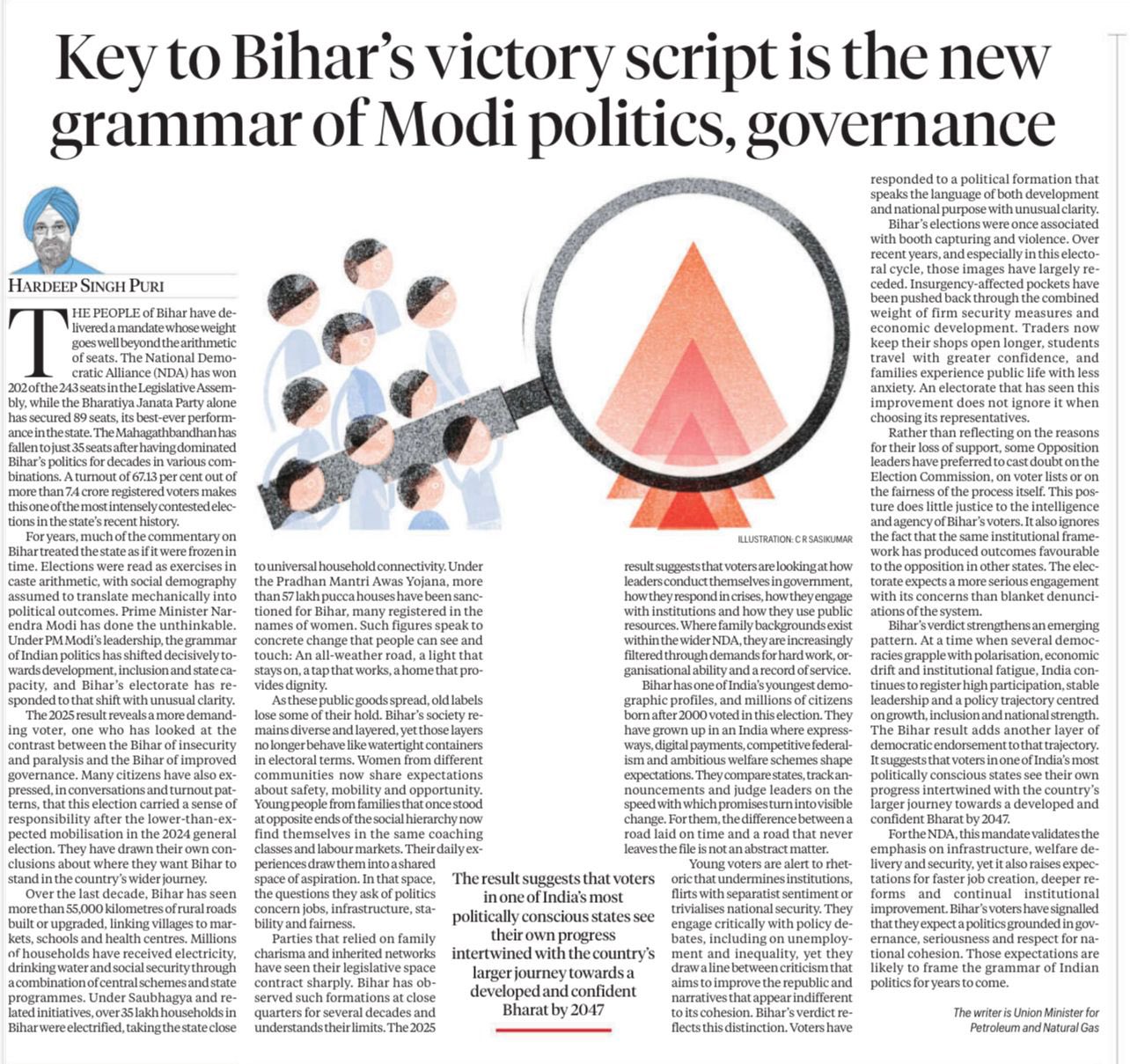
PM Sh Narendra Modi Ji has done the unthinkable in Bihar and it will change the grammar and lexicon of Indian politics for the ti...
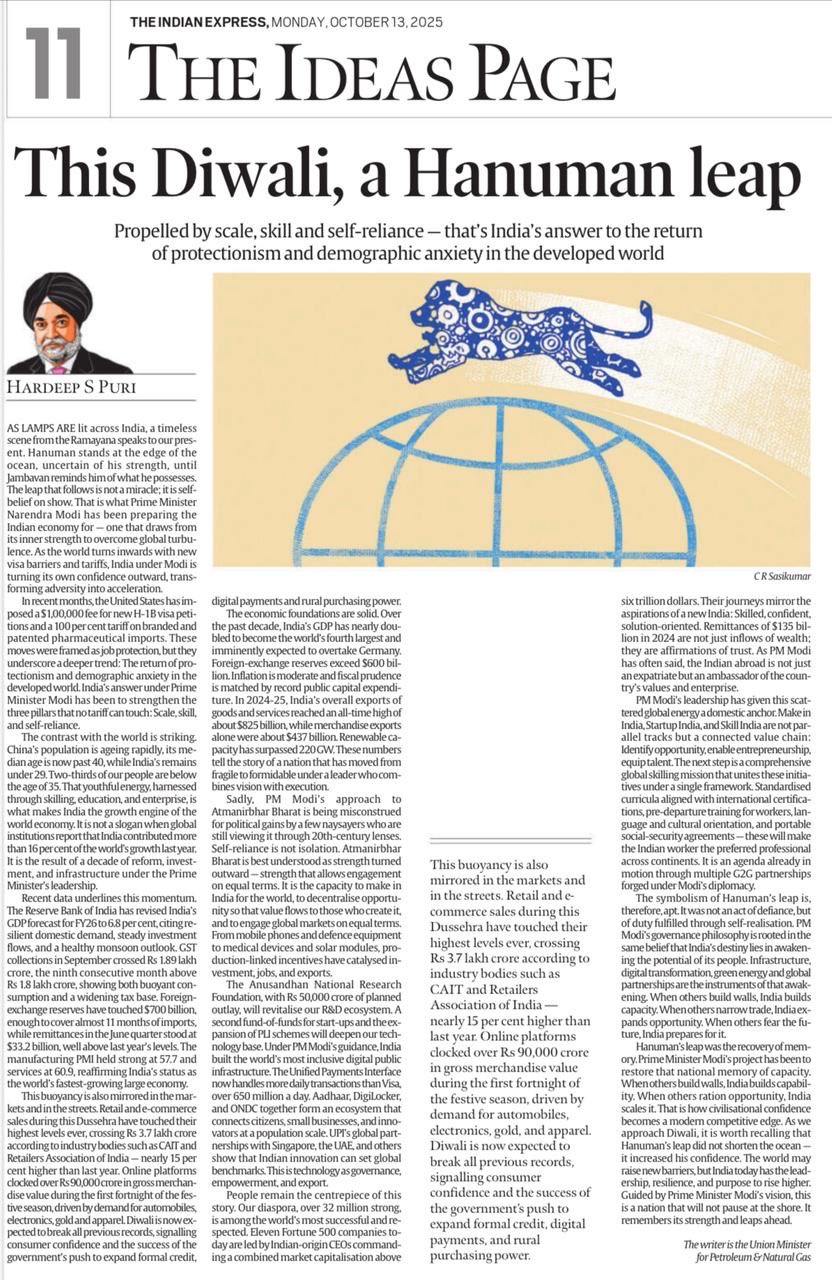
As the world passes through a period of geopolitical turmoil and uncertainty, India, under the visionary & decisive leadership of ...
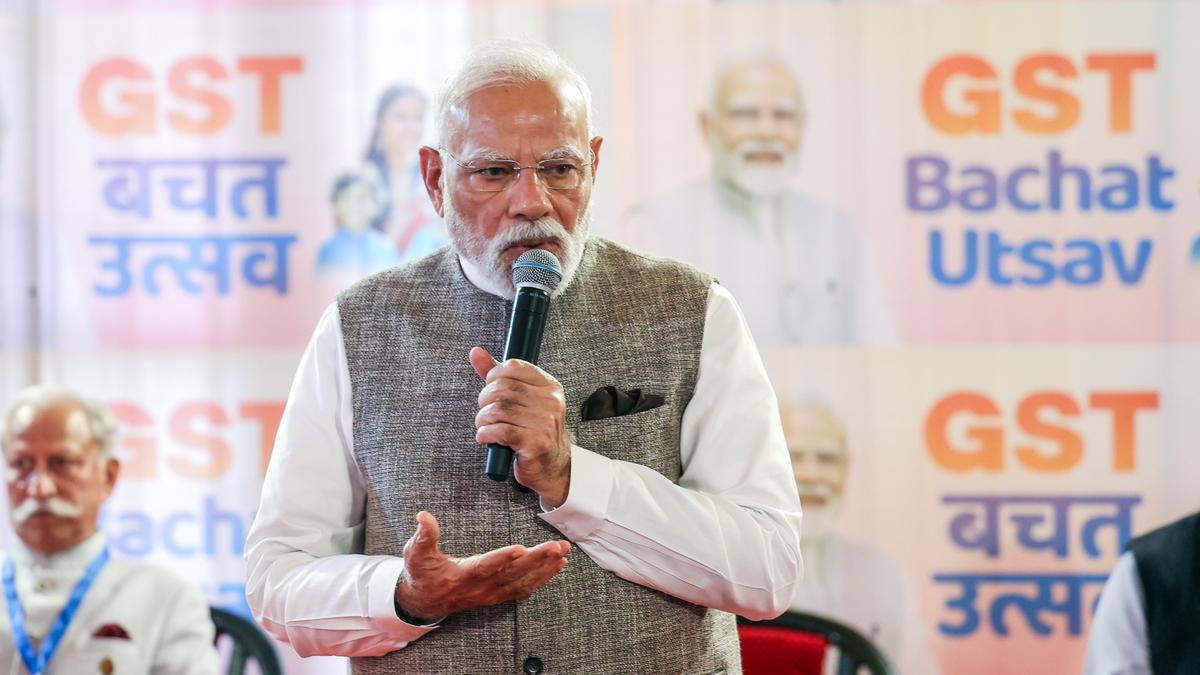
The Prime Minister’s professionalism and work ethic are what make the difference on the ground Praise has been showered on Pr...
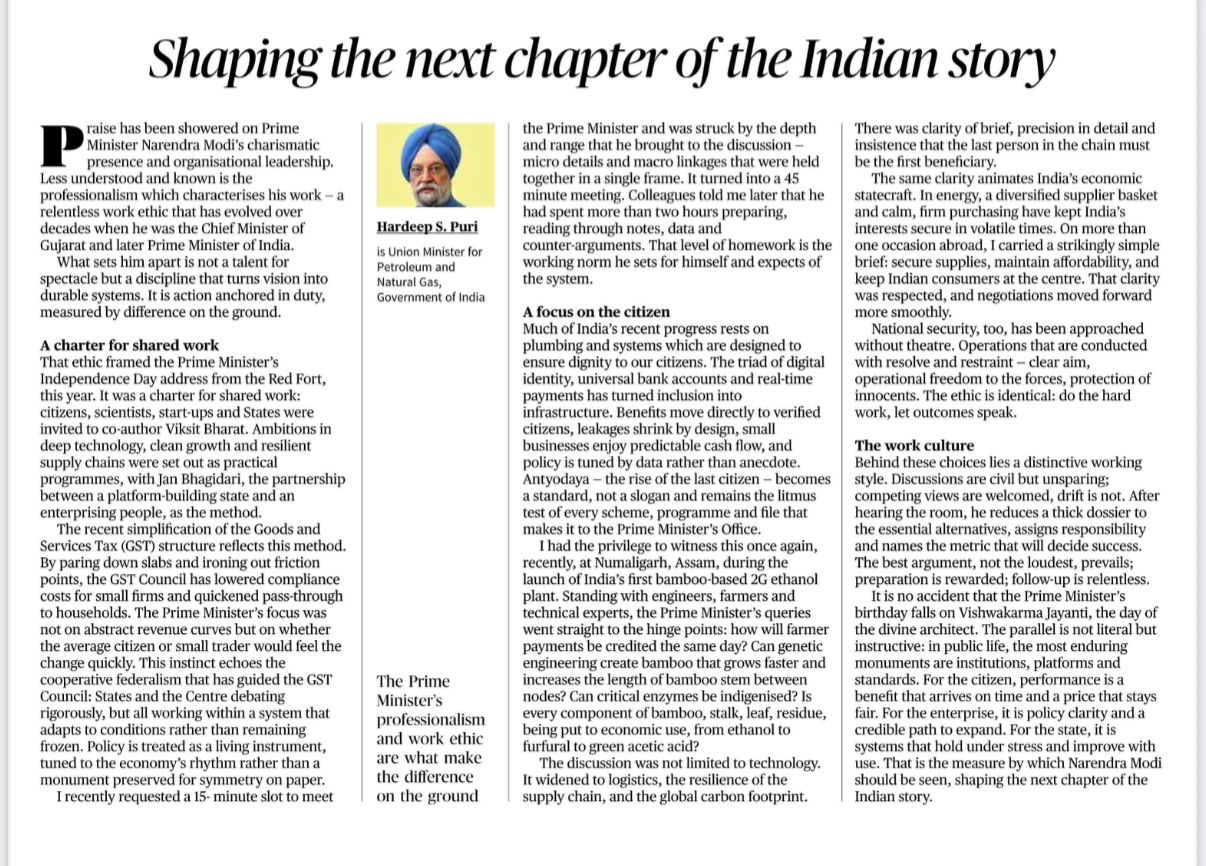
Shaping the next chapter of the Indian story!...
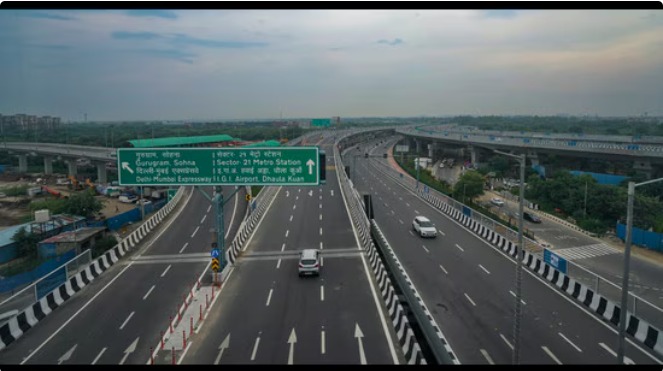
Indian cities are again on that path to being modern yet humane, ambitious yet inclusive, global in outlook yet rooted in our valu...

India’s fact-rich story of resilience, growth and energy security will silence the ‘global doubters’ who call it a ‘dead e...
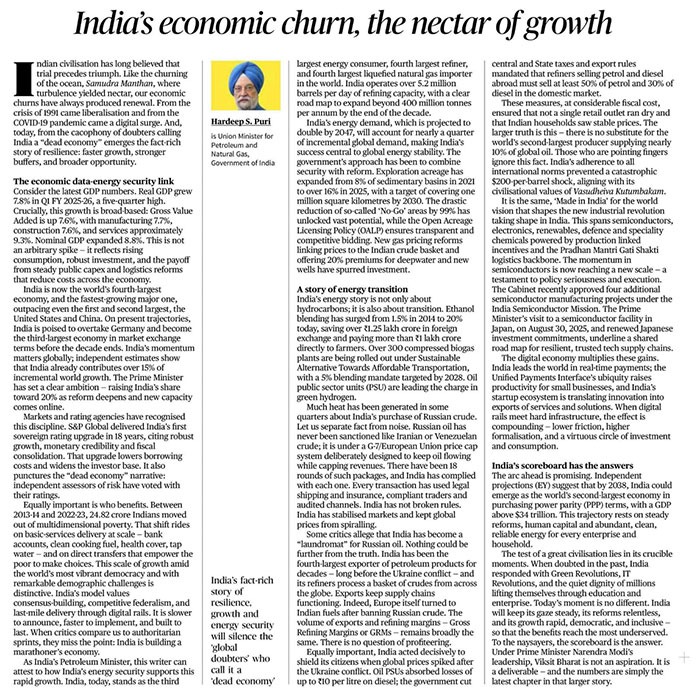
The test of a great civilisation lies in its crucible moments. When doubted in the past, India responded with Green Revolutions, I...
.jpeg)
विकसित भारत के लिए प्रधानमंत्री श्री नरेंद्र मोद...
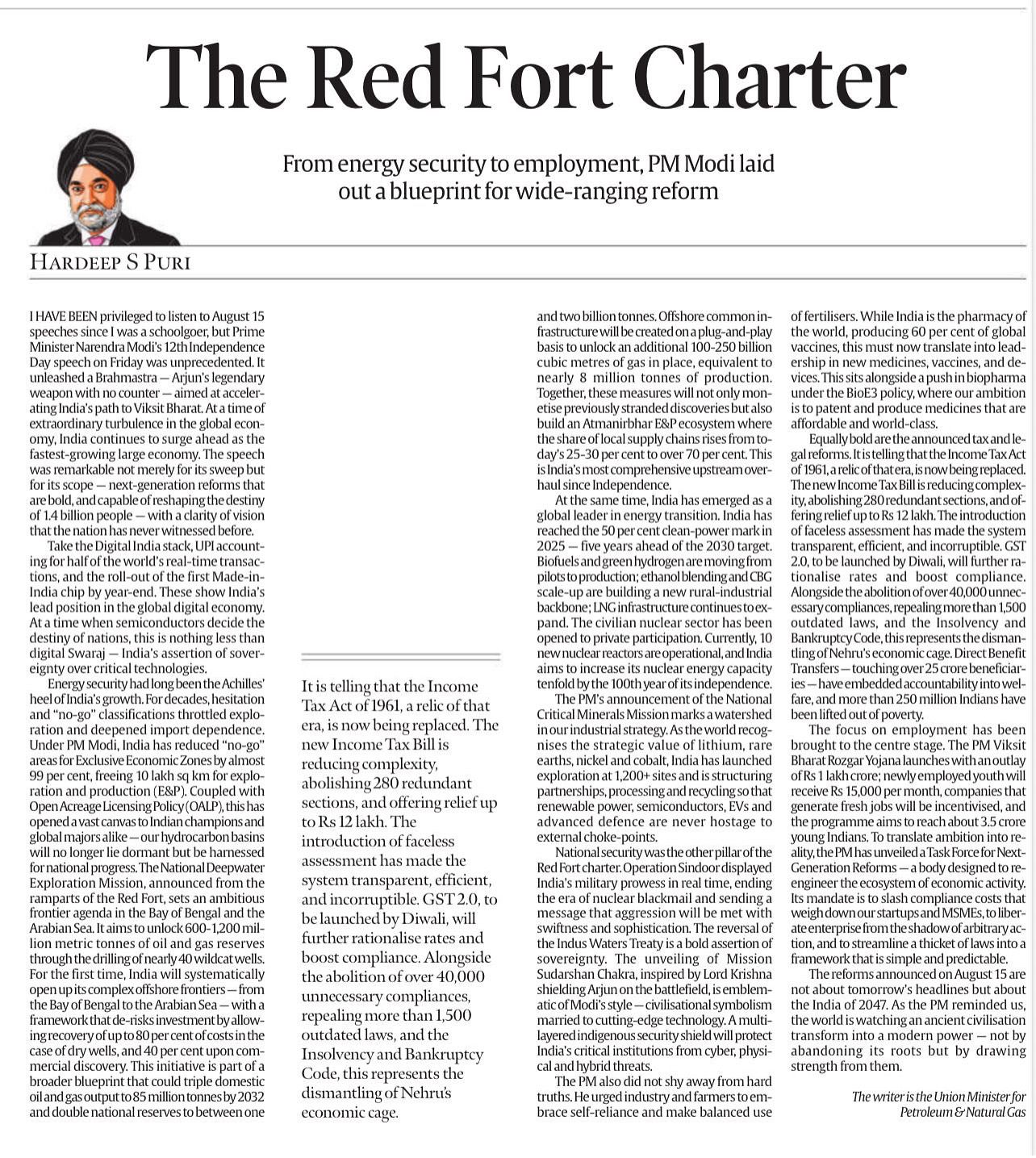
PM Sh Narendra Modi Ji’s unprecedented 12th Independence Day speech was remarkable for its sweep and scope. The speech which un...